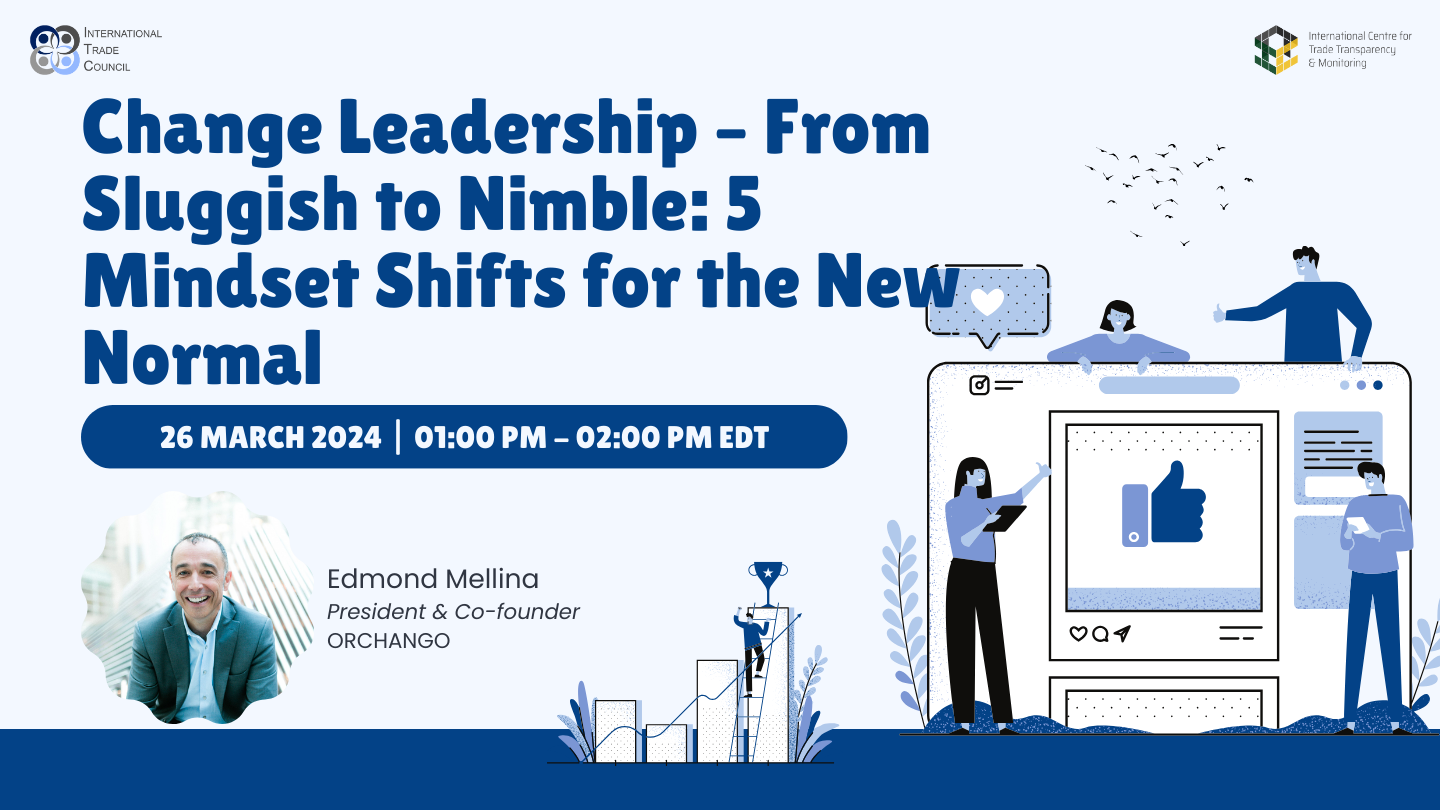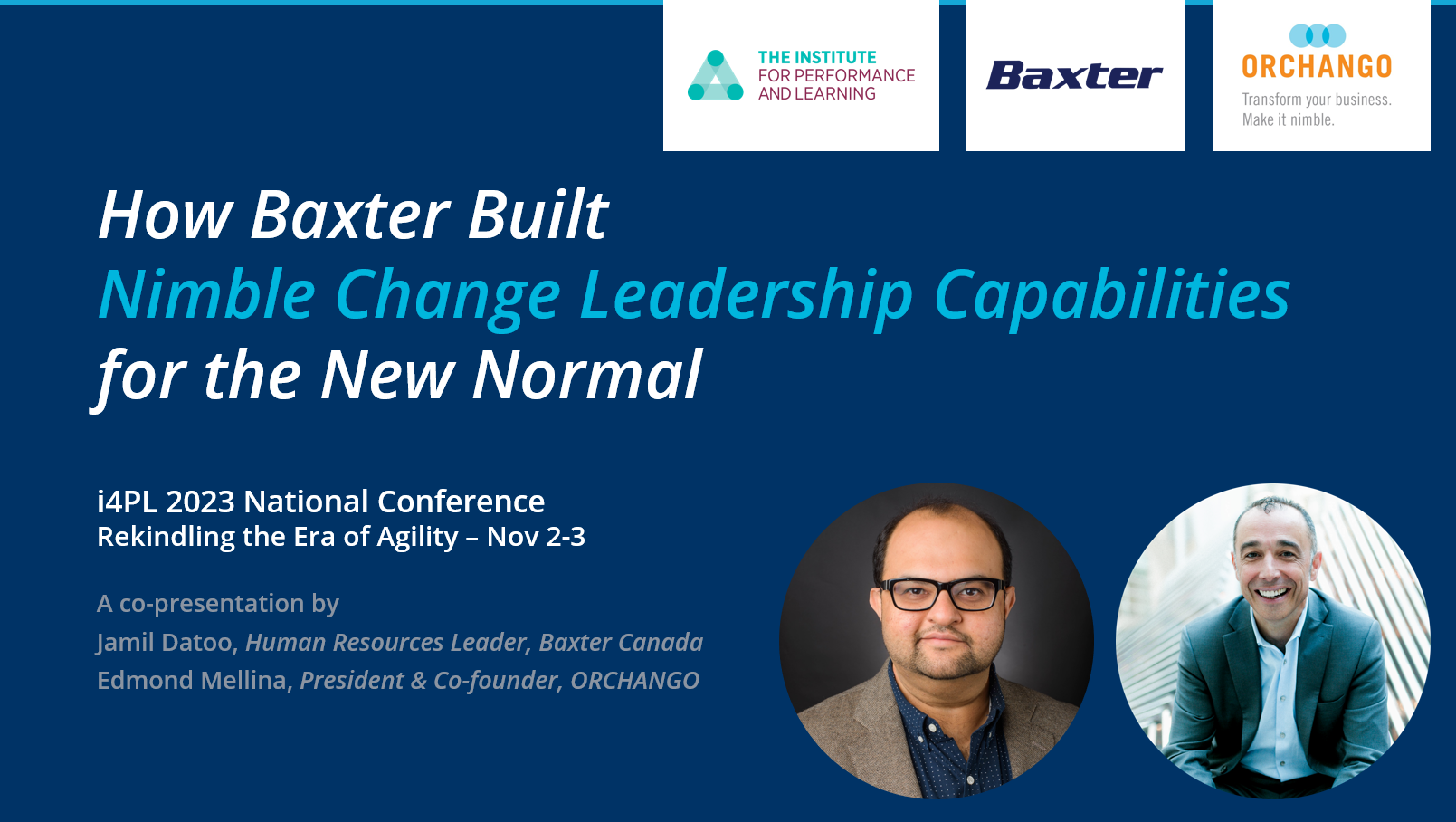When talking with C-suite executives and other transformation leaders about leading through change in the…
When the business takes the lead & HR stops worrying about big data

Premier US-based association HRPS (executive arm of SHRM) invited Edmond Mellina to contribute to its brand new blog on HR, people and strategy. McKinsey’s latest Capability Building Survey results provided the starting point for the blog post…
This post also appeared on the blog of the Strategy Capability Network.
——————
Last evening I came across a new article by global management consulting firm McKinsey & Company presenting the results from their 2014 Capability Building Survey. They garnered responses from about 1,500 executives around the globe. It was their second survey on the topic, four years after the inaugural one (you will find a link to McKinsey’s article at the end of this blog post).
I was pleased to see that compared to 2010 more companies recognize the strategic importance of capabilities: half of all the executives who responded (even more in India and China) said capability building was one of their companies’ Top-3 priorities. That is good news.
But lots of challenges remain. Not surprisingly, the organizations that are most effective at capability building are doing things differently or better. As I glanced through the survey results, two areas caught my attention because they resonate with my own experience with capability building:
- Co-ownership: at the top organizations, HR and the business share responsibility for learning and skill building.
- Credible metrics: the survey indicated that metrics are a growing concerns. But the best organizations are doing a much better job in this area.
The article sank in overnight. And this morning during my commute I thought about the survey’s implications for HR executives. Two issues captured the bulk of my reflection.
Read on and push our collective thinking by jumping in on the conversation. We will all benefit!
Achieving co-ownership by letting the business take the lead
It might sounds like an oxymoron, but letting the business take the lead might be the best way for HR to drive co-ownership for capability building.
A recent client experience prompted the thought. About three years ago, the executive team of that organization decided to embark on a capability building journey. The big focus was on increasing their ability to absorb change. Wisely, they made the undertaking a strategic initiative and appointed an executive sponsor.
Interestingly, they didn’t ask the CHRO to lead capability building. Instead, during the first 18 months of the journey the VP of Strategy & Research spearheaded the process. Of course, the CHRO worked very closely with that person all along. As a result, a strong partnership emerged between these two executives – and also with the other senior managers, including the CEO. A year and a half into their capability building journey, a major reorganization prompted a change of executive sponsor. The responsibility still didn’t go to the CHRO. Instead it went to the CFO. The partnership grew even stronger. Today, they all co-own capability building.
This client’s approach to achieving co-ownership for a HR-related initiative reminds me of the modus operandi of effective CIOs:
- Thinking almost exclusively in terms of “business initiatives” (even when technology is the major component) – and therefore seldom talking about “IT initiatives”;
- Making sure that a committed business executive leads each initiative;
- Seeing the CIO role as partnering with the business sponsors to help them succeed;
- And, of course, ensuring IT executes effectively and delivers.
Thanks to this approach, these CIOs establish robust partnerships with their peers while setting a solid foundation for success from the get go. The business and IT end up co-owning these “business initiatives”.
The results of the McKinsey survey point to the importance of co-ownership for capability building. The two examples above seem to indicate that an effective way for HR to achieve co-ownership might be to let the business officially take the lead – and focus on helping them succeed. Yet, what I see most of the time is HR leading capability building.
Is that also your experience? Should HR executives take a page from the “effective CIOs’ book” by letting the business take the lead more often? What do you think?
Worrying less about “big data” and more about capability building metrics
The authors of the McKinsey article wrote: “When asked about their companies’ biggest challenges in building capabilities, executives cite a lack of credible metrics much more often than they did in 2010 [the year of their earlier survey]”.
With all the hype these days about the overwhelming volume of data available, it is hard not to think “big data” when talking about metrics. It is a hot topic in every function, including HR.
I am assuming the big data movement is here to stay, but I can’t help feeling there is a faddish element to it. Late management thinker Peter Drucker famously said: “Thinking is very hard work. And management fashions are a wonderful substitute for thinking.” In the case of big data, the problem might rather be that HR executives spend too much time worrying about it. It’s a daunting task to think about “harnessing the deluge of data” or “navigating the data lake” (these are some of the lovely phrases used by experts in the field).
When we worry too much, we waste a lot of energy. We don’t get things done. We miss opportunities. That is not good.
So maybe HR executives should think less about the big data challenge, and more about the lack of credible metrics for the strategic issue that is capability building.
Going back to the client organization I talked about earlier, they are still trying to figure out how to better manage and leverage the vast amount of data that their business generates. I would bet they will continue worrying about it for many years to come. But it didn’t take them too long to select and operationalize credible metrics to fuel their capability building journey. Of course, the fact that both the business and HR co-owned the initiative made the process easier.
It is about crossing the “data lake” one paddle stroke at a time. Capability building is a strategic island not too far from the shore. Don’t worry too much about the big lake; focus on the island; and get going.
I’m looking forward to reading your comments and benefiting from your insights and perspectives!
P.S. here is the link to the McKinsey article: http://www.mckinsey.com/insights/organization/building_capabilities_for_performance
Copyright © 2015 by ORCHANGO. All rights reserved. | Photo credit: ©freeimages.com/flaivoloka
ABOUT HRPS
HR People & Strategy (HRPS) is a strategically focused, ground-breaking network of influential HR executives and innovative HRM professionals representing the world’s most prominent organizations. HRPS is regarded by many as the premier professional organization focused on the intersection of people and strategy. HRPS is affiliated with the Society for Human Resource Management (SHRM), the world’s largest HR association. www.hrps.org.




This Post Has 0 Comments